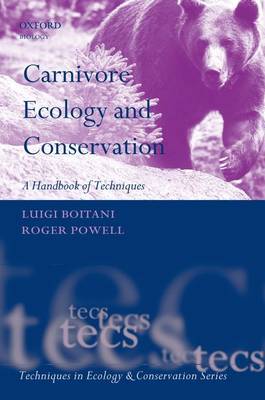
- Retrait gratuit dans votre magasin Club
- 7.000.000 titres dans notre catalogue
- Payer en toute sécurité
- Toujours un magasin près de chez vous
- Retrait gratuit dans votre magasin Club
- 7.000.0000 titres dans notre catalogue
- Payer en toute sécurité
- Toujours un magasin près de chez vous
247,95 €
+ 495 points
Format
Description
Animals that must hunt and kill for at least part of their living are inherently interesting to many people and the role that carnivores play in biological communities attract interest from ecologists and conservation biologists. Conflicts with human activities stimulate continual debates about the management of carnivore populations, and throughout the world people seek workable solutions for human/carnivore coexistence. This concise yet authoritative handbook describes research methods and techniques for the study and conservation of all terrestrial carnivore species. Particular attention is paid to techniques for managing the human/carnivore interface. Descriptions of the latest methodologies are supported by references to case studies, whilst dedicated boxes are used to illustrate how a technique is applied to a specific land cover type, species, or particular socio-economic context. The book describes the most recent advances in modelling the patterns of animal distributions, movements, and use of land cover types, as well as including the most efficient methods to trap, handle, and mark carnivores. Carnivores are biogeographically diverse and whilst extensive scientific research has investigated many aspects of carnivore biology, not all species have been equally covered. This book is unique in its intention to provide practical guidance for carrying out research and conservation of carnivores across all species and areas of the world.
Spécifications
Parties prenantes
- Auteur(s) :
- Editeur:
Contenu
- Nombre de pages :
- 544
- Langue:
- Anglais
- Collection :
Caractéristiques
- EAN:
- 9780199558520
- Date de parution :
- 21-03-12
- Format:
- Livre relié
- Format numérique:
- Genaaid
- Dimensions :
- 236 mm x 163 mm
- Poids :
- 1026 g

Les avis
Nous publions uniquement les avis qui respectent les conditions requises. Consultez nos conditions pour les avis.






